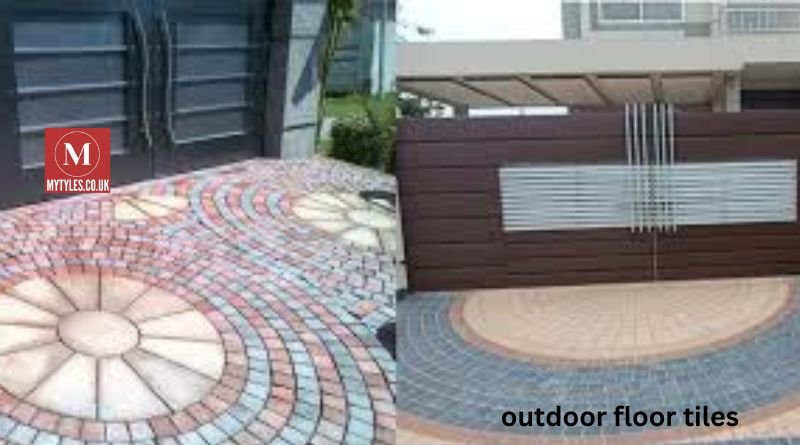Outdoor floor tiles are a popular choice for enhancing the beauty and functionality of exterior spaces like patios, decks, walkways, and pool areas. With the variety of options available today, homeowners can choose tiles that not only meet their aesthetic preferences but also withstand harsh weather conditions and heavy foot traffic. In this article, we will explore the different types of outdoor floor tiles, their benefits, design ideas, installation processes, and maintenance tips, helping you make an informed decision when selecting the right tiles for your outdoor space.
Why Choose Outdoor Floor Tiles?
Outdoor floor tiles offer numerous advantages over traditional materials like wood, concrete, or natural stone. They are designed to be durable, slip-resistant, and resistant to moisture, making them ideal for outdoor use. One of the key benefits of outdoor tiles is their ability to create a seamless flow between indoor and outdoor spaces, giving your home a cohesive and sophisticated look. Additionally, outdoor tiles come in a wide range of materials, colors, and textures, allowing you to customize your outdoor areas to match your style and preferences.
Another advantage of outdoor floor tiles is their low maintenance requirements. Unlike wood, which needs regular sealing and staining, or natural stone, which can be prone to cracking and weathering, outdoor tiles are generally easy to clean and require minimal upkeep. This makes them an excellent long-term investment for homeowners looking to enhance their outdoor spaces.
Types of Outdoor Floor Tiles
Choosing the right type of tile for your outdoor area is crucial to ensuring both the aesthetic appeal and functionality of your space. Below are some of the most popular types of outdoor floor tiles available:
1. Porcelain Tiles
Porcelain tiles are one of the most common choices for outdoor flooring due to their durability and water resistance. These tiles are made from a denser type of clay and are fired at higher temperatures, making them impervious to moisture and extreme temperature changes. Porcelain tiles are also available in a wide range of styles, including options that mimic natural materials like wood, stone, or concrete, giving homeowners the freedom to create a variety of looks.
Porcelain tiles are also known for their slip-resistant finishes, which are essential for wet areas like pool surrounds or outdoor showers. Their versatility and strength make them an ideal option for high-traffic areas like patios or garden paths.
2. Ceramic Tiles
Ceramic tiles are another popular option for outdoor flooring. While they are not as dense or durable as porcelain tiles, they are still suitable for covered outdoor areas, such as patios or balconies. Ceramic tiles are known for their affordability and ease of installation. They come in a variety of colors, patterns, and finishes, giving you plenty of design flexibility.
However, ceramic tiles may not be the best choice for exposed areas that experience frequent rainfall or freezing temperatures, as they are more porous and prone to moisture absorption.
3. Natural Stone Tiles
For those seeking a more natural and timeless look, natural stone tiles such as granite, slate, travertine, and limestone are excellent choices. These tiles offer unique variations in color and texture, giving each piece a distinctive character. Natural stone tiles are highly durable and can withstand harsh weather conditions, making them ideal for outdoor use.
However, natural stone requires more maintenance than other types of tiles. Regular sealing is necessary to protect the surface from moisture and staining. Additionally, natural stone can be more expensive than ceramic or porcelain options, but its beauty and longevity often make it a worthwhile investment.
4. Concrete Tiles
Concrete tiles are another durable and versatile option for outdoor flooring. These tiles are available in various shapes, sizes, and colors, and can even be customized with patterns or textures to mimic the look of stone, wood, or brick. Concrete tiles are known for their strength and durability, making them ideal for high-traffic areas like driveways, walkways, and patios.
Concrete tiles are low-maintenance and weather-resistant, but they can be prone to cracking over time if not installed properly or if the ground beneath them shifts. Proper installation and sealing are key to ensuring the longevity of concrete tiles.
5. Wood-Look Tiles
Wood-look tiles are an excellent option for homeowners who love the appearance of natural wood but want the durability and low maintenance of tiles. These tiles are typically made from porcelain or ceramic and are designed to mimic the texture and grain of real wood. Wood-look tiles offer the warmth and charm of wood without the risk of warping, splintering, or rotting due to exposure to the elements.
These tiles are also slip-resistant and available in a variety of colors and finishes, making them a versatile choice for outdoor areas like decks, patios, or garden pathways.
Design Ideas for Outdoor Floor Tiles
Outdoor floor tiles can dramatically transform the look and feel of your exterior spaces. Whether you prefer a modern, rustic, or traditional design, there are endless possibilities when it comes to outdoor tile layouts and patterns. Here are some popular design ideas to inspire your next outdoor renovation:
1. Natural Stone Look
For a classic and elegant outdoor space, natural stone tiles like slate or travertine can create a luxurious yet earthy ambiance. Pairing different sizes of stone tiles in a random pattern can add depth and visual interest to your patio or garden area.
2. Geometric Patterns
For a modern and eye-catching design, consider using geometric tiles to create bold and intricate patterns on your outdoor floor. Hexagonal or chevron-patterned tiles can add a contemporary edge to your space, while still being functional and slip-resistant.
3. Wood-Inspired Decking
If you love the look of a wooden deck but prefer the durability of tiles, wood-look tiles are a perfect solution. Arrange the tiles in a herringbone or staggered pattern to mimic the appearance of traditional wood decking while ensuring your outdoor floor can withstand weather and wear.
4. Mediterranean-Inspired Courtyard
For a warm and inviting outdoor space, consider using ceramic or porcelain tiles in vibrant colors and intricate patterns. Mediterranean-inspired designs often feature bold blues, yellows, and terracotta hues, perfect for creating a charming courtyard or patio.
Installation Tips for Outdoor Floor Tiles
Proper installation is essential for ensuring the longevity and performance of your outdoor floor tiles. Here are some tips to keep in mind when installing tiles in outdoor spaces:
- Prepare the surface: Make sure the surface where you plan to install the tiles is clean, level, and free of debris. For areas prone to water accumulation, consider installing a proper drainage system to prevent pooling.
- Choose the right adhesive: Use a high-quality, weather-resistant adhesive specifically designed for outdoor use. This will help ensure the tiles adhere properly and withstand environmental factors like moisture and temperature fluctuations.
- Leave room for expansion: Outdoor tiles can expand and contract due to temperature changes, so it’s important to leave small gaps between the tiles during installation. This will prevent cracking or buckling over time.
- Use grout suitable for outdoor use: Select a grout that is waterproof and resistant to stains, as outdoor areas are often exposed to rain, dirt, and debris. Sealing the grout can also provide additional protection.
Maintaining Outdoor Floor Tiles
Maintaining your outdoor floor tiles is relatively easy compared to other materials like wood or natural stone. Here are some general maintenance tips to keep your tiles looking their best:
- Regular cleaning: Sweep your outdoor tiles regularly to remove dirt, leaves, and debris. For more thorough cleaning, use a mild detergent and water to scrub away stains or grime. Avoid using harsh chemicals, as they can damage the tile surface.
- Check for damage: Periodically inspect your outdoor tiles for cracks, chips, or loose tiles. Promptly address any issues to prevent further damage and ensure the safety of your outdoor space.
- Seal the tiles if necessary: Some types of outdoor tiles, particularly natural stone, may require regular sealing to protect them from moisture, stains, and wear. Be sure to follow the manufacturer’s recommendations for sealing and maintenance.
Conclusion
Outdoor floor tiles offer a stylish and practical solution for enhancing the functionality and beauty of your exterior spaces. With a wide range of materials, designs, and patterns available, you can create the perfect outdoor area that complements your home’s architecture and personal style. Whether you prefer the durability of porcelain, the natural beauty of stone, or the warmth of wood-look tiles, outdoor floor tiles can elevate your outdoor spaces while providing long-lasting performance. By choosing the right tiles and following proper installation and maintenance practices, you can enjoy a stunning and durable outdoor floor for years to come.
Read also: check




